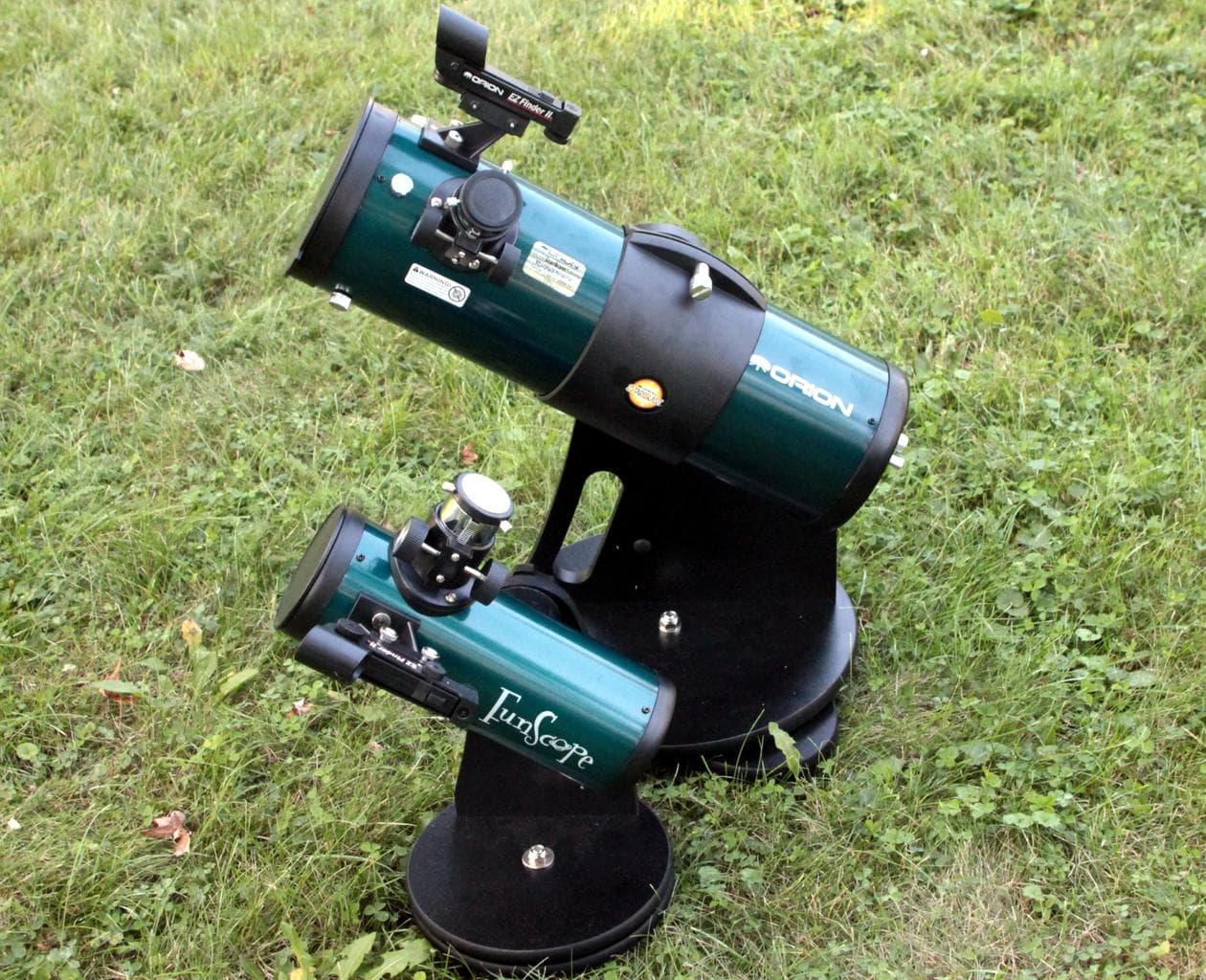
with David Fuller

About "Budget" Telescopes - A Bit of a Rant at Telescope Snobs
Can I vent a frustration? This is a long semi-rant, and truly, I'm really not trying to start an argument (though it might, truly that's not the intention). Rather, I hope I can get people to think a little about how to better encourage people with minimal astronomy budgets, especially when it comes to discouraging comments I've read about the very low end budget telescopes.
I see lots of newcomers to amateur astronomy ask what telescope they can purchase for X amount of money. And invariably, one - or sometimes several - "more experienced" amateurs jump in and say, "You can't buy ANY decent telescope for under X amount!"
This is objectively *not* true anymore.
Perhaps that was the case for telescopes made 20 or 30 years ago (never mind decades before that). But today? Not the case. Oh, for sure, there ARE still crappy telescope options under $200 (heck, even under $400 for some things out there). But there are decent options too.
For one thing, the people who do that "jumping in" like that were the same type of person who complained for years that telescope manufacturers - making telescopes to a price point - made crappy telescopes that were on shaky tripods, had miniscule mounts, included bad 0.965" eyepieces, came with terrible finderscopes, and claimed "575 POWER!" with too-small optics - with, at least, a decent achromatic lens of f/8 mirror (often the telescope's only saving grace).
They had some valid points then. Heck, I was making those arguments too!
So telescope manufacturers responded. And they came up with telescope options that are not only LESS expensive, but addressed the criticisms: They have a solid mount, come with 1.25" eyepieces, have useful finders (if red dot in style rather than magnified) and don't try to claim huge magnification as a selling point - AND the optics are at least pretty acceptable.
Isn't that what you wanted? Now keep in mind - people have budgets, so telescope makers are making some telescopes to HIT that price point. But what happens?
The criticizers from before now say, "OMG! The COMA in those little tabletop reflectors is AWFUL! It's a SPHERICAL mirror! You can't see ANYTHING in those! And there's NO COLLIMATION possible! You can't buy ANY good telescope for under X money!"
Again, all of this is objectively untrue. (Okay, the coma *is* severe, but more on that in a moment.)
See, it bothers me that people get jumped on for pointing out these little scopes have some pretty good benefits for low budgets - or dismissing them as "not good" because they are under $200 or $100.
For one thing, they are larger than the 50mm and 60mm refractors (and even 70mm ones). So the newbie gets APERTURE. What do you need to see more in the sky? Aperture! That was a criticism before, right?
Oh, you can't collimate it? So? Many of these tabletops are good *because* they don't require collimation - that's what some touted as being good about refractors before. Collimation is a skill that isn't for everyone - so less fiddling with the optics is perhaps better. Oh, the collimation is off? Okay - usually it's minor, at worst.
The red dot finders are at least useful (unlike the atrocious 5x24's that were often worse than not having anything at all), and while the eyepieces are often Huygens, in some cases, they are at least 3-element Kellners - that was a GOOD eyepiece just a couple decades ago. And remember - price point! You're not going to get a $100 telescope including two eyepieces that are $50 or $60 new.
All of those are IMPROVEMENTS on the criticisms you leveled previously.
And coma? Big. Freaking. Deal. YOUR 10" f/4.5 or 16" f/4 has coma! Where do you observe when looking through the eyepiece? At the edge? No. In the center, where there is what?
No. Coma.
(Yes, you may have a coma corrector for that. How much did that cost?)
And, about that aperture again. I've seen M1 in my 76mm Funscope. I've seen M81 and M82. Faint? Sure. But M13, M92, M11, M6, M7, M22, M27, M57, M31, M42, Double Cluster, ET Cluster - all EASY! Could I see Saturn and Jupiter too? Yes. Are they small? Yes. Did I need a 3x barlow to see those well? Yes. But so what? They're small in any telescope limited to 150x on a given night due to the atmosphere anyway! For $100 or $120 ($60 telescope + good 3x barlow), I can get a telescope that can get me EXCITED about the night sky, because the telescope is at least USEFUL and will show objects in the sky.
How is that bad? Have you *really* used one? I don't mean, "I looked through it and saw the coma sucked." I mean, "Have you used one and tried to get the most out of it to see what OTHERS might be able to get out of it if their budget is small?"
EVERY telescope has trade offs somewhere. Even your best, most awesome, "I love-this-telescope-and-will-never-sell-it-EVER" instrument has trade offs. If it's not aperture, it's price, or the weight, or the coma, or the fact that your telescope is not Hubble and above the atmosphere or doesn't have adaptive optics... your telescope has trade offs too.
For some, especially newbies with small budgets, it's very often three things:
The price.
The price.
The price.
So if you have never used a little tabletop - or even if you have - can we at least appreciate and encourage newbies who have very limited budgets with these? They are FAR better than the crappy 50mm alt-az refractor I got some 30 years ago and somehow managed to find and see things with.
Are the tabletop reflectors perfectly ideal? No. Are they are 6" f/8 or 8" f/6 Dob? No. But they are 1/3 to 1/4 those prices and as such an amazingly budget-friendly entry point into this pasttime/hobby/passion we all share. Some people don't have the budget you do - or aren't sure they want to spend $300 or $400 yet. And learning on a small telescope that is at least useful and affordable will help them learn what those optical aberrations are, and how to choose perhaps a better telescope later.
Let's encourage people with limited budgets, not berate them. Yes, I get that we should try to push budgets up if possible. Let's get newbies excited about what they CAN see and promote the more useful budget options out there.
And maybe buy one yourself for $60 or $70. When we aren't social distancing and can actually do outreach again, they are a GREAT way to let small children use/move a telescope, aim it at the Moon, and not worry about them breaking it. Want to get KIDS excited? Get a Funscope or Firstscope or other tabletop option. Try it. Use it. Push yourself to see what YOU can see with it. Seeing a kids face light up that not only can they look through the telescope but MOVE it and USE it can spark a lifetime of interest. Plant that seed, outreach-person. That's a small investment. And you might come to appreciate how good these little 'toys' are (and are more than a toy) for people on a very limited budget.
Okay, long rant over. And remember, I'm trying to encourage us to think differently about those "lower budget" folks, and to think differently about how we respond to their queries rather than saying there's "nothing" good under $100 or $200. Don't be a snob about optical perfection. Be encouraging about whetting a beginner's appetite for a lifelong passion of exploring the night sky.
